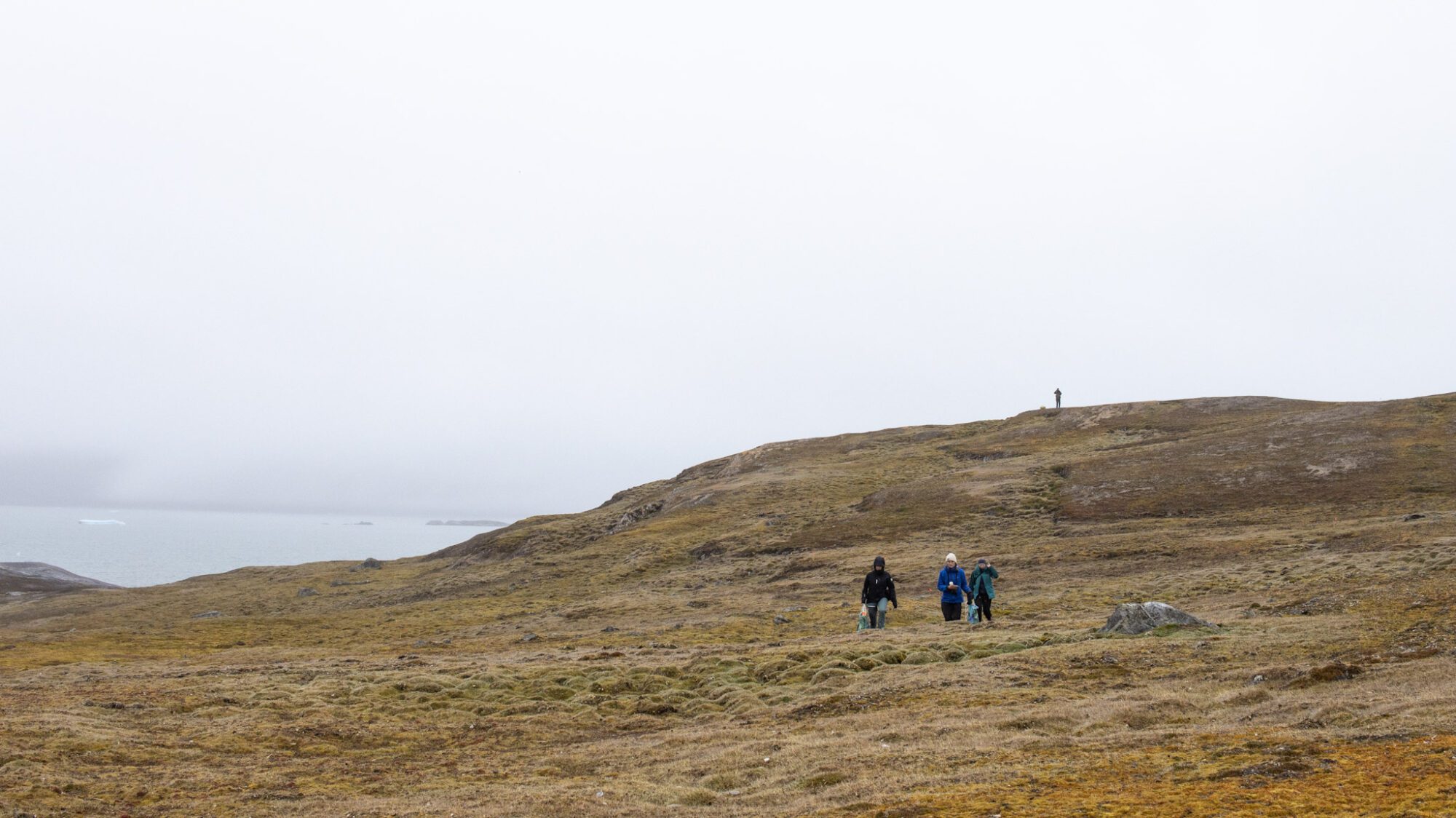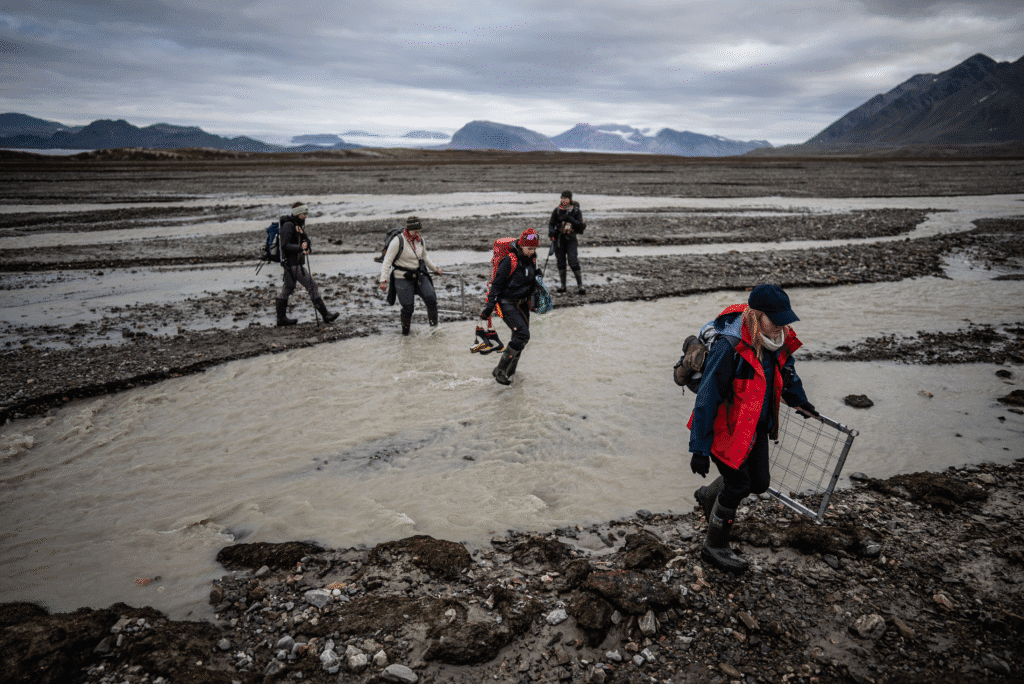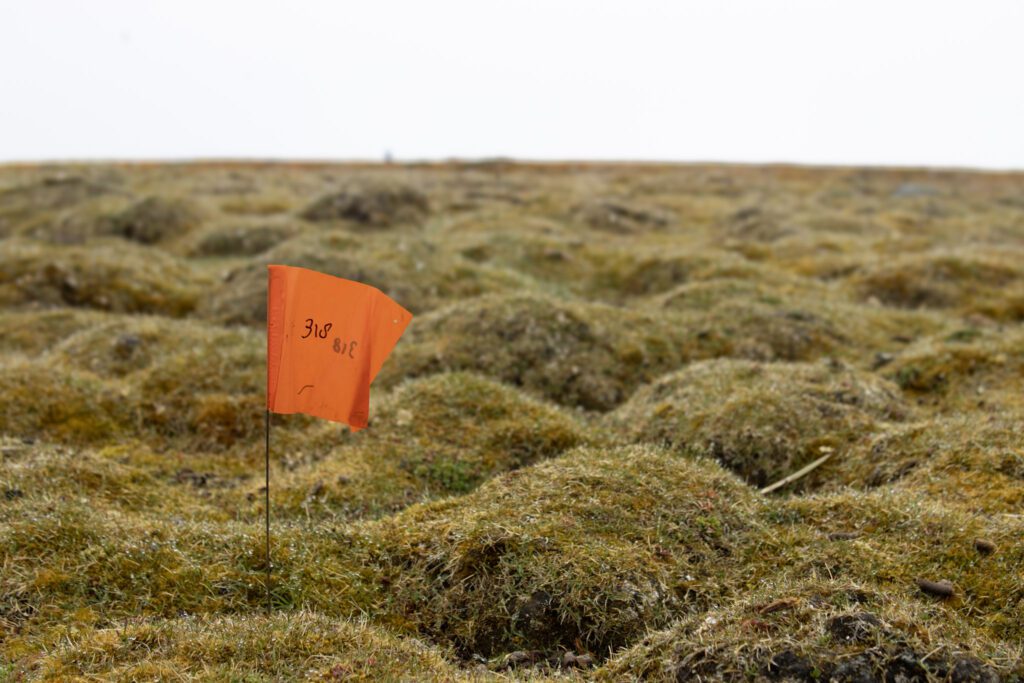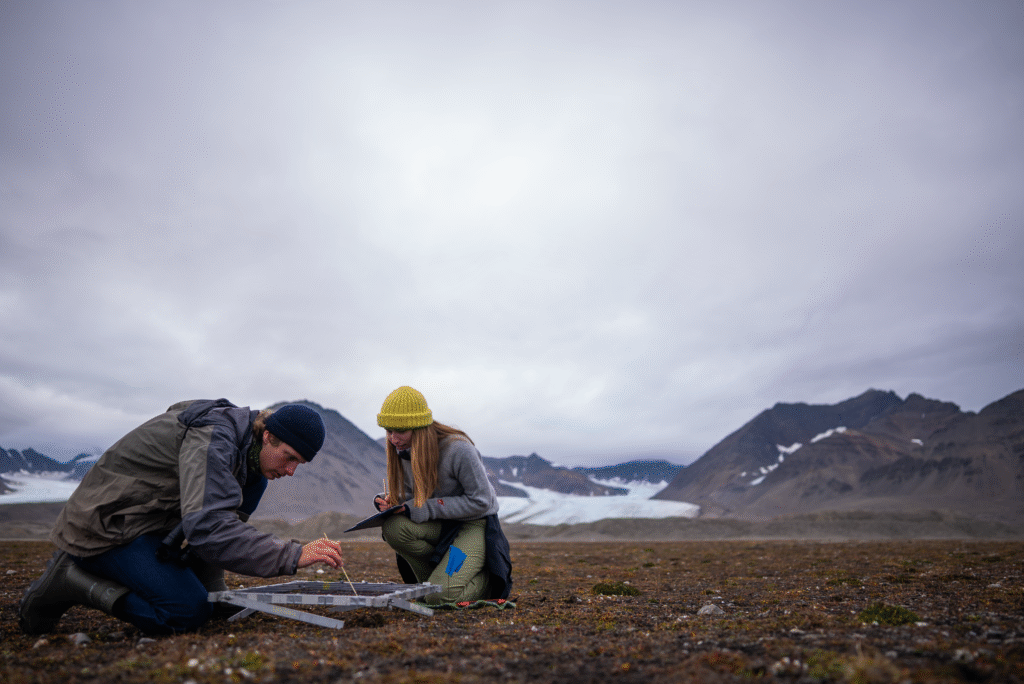Crossing a meltwater river on the way to the glacier. Picture by Frederik Brogaard.
UNIS course “Terrestrial Arctic Biology” in Ny-Ålesund
Between the 11th and 18th of August, a group of 20 students and teachers visited Ny-Ålesund to do fieldwork for the course “Terrestrial Arctic Biology” from the University Centre of Svalbard. The course was in collaboration with Maarten Loonen from the University of Groningen (Netherlands), explaining the students everything about geese and vegetation mapping.
Each day, the group was divided in two: one group was shuttled to Storholmen to map the vegetation on the island together with Maarten. The other group walked to the moraines of Midtre Lovenbreen to study the site there, focussing on how vegetation communites and soil characteristics develop as glaciers retreat. They made a so-called “chronosequence”, sampling the moraines on different distances from the glacier, which were all exposed at different times as the glacier retreated.
The group was eager to learn and well-prepared. Not everything went according to plan A, as several bears disrupted some fieldwork opportunities. Still the students managed to map a solid part of vegetation, and the bears and the long walks to the glacier gave highly valuable experiences. The theory of field safety and preparedness was turned into practice, and with success.
Upon leaving, the students shared their experiences by answering one or two questions. See some impressions below!

What was the most surprising thing your learned (during your course) in Ny-Ålesund?
“How much work research is and what long days you make”
“How fast polar bears swim and walk, and how hidden they can be despite their size”
“I learned a lot about fieldwork and safety”
“How fast your plans may change and that you always should have a plan B and maybe even C”
“That reindeers eat geese poop since geese do not digest a large part of the plant material, leaving their poop quite nutritious”
“That bears eat geese-eggs”
“Barnacle goose dominance tactics”
“Keeping cool during polar bear encounters”
“How fast the weather can actually change”
“How good the food is at the northernmost cantina”
“How good the UNIS-safety and polar bear training is and how applicable it actually is in the field”
“It was very fascinating to learn about how this remote community is built, on unique history, safety, communication and social life.”
“How very welcoming the community is here, eating together and being friendly at the meals”

What was you favorite or most memorable experience during your stay?
“When we encountered a mother bear and two cubs on Storholmen and we scared the mother away with our voices. How everyone helped and communicated quickly with one another during the bear encounter”
This answer was given about 10 times in different variations. Apart from the bear encounter, the following impressions sticked:
“Getting to know the group so well”
“Maarten made geese so interesting”
“The amount of nice common rooms to sit together. It makes it much easier to create memories together and feel like a group”
“The wildlife! Especially the polar bears and arctic foxes. I felt completely safe, but it was such an amazing experience. And really cool to see how and Arctic research station works.”
“Beside the bear encounter, my another favorite experience was dinner. When you are cold and miserable on the glacier, it was so nice to look forward to. I am gonna miss that back in Longyearbyen.”
“My most memorable experience is seeing the glaciers up close and get to see picture of how much they have retreated. Learning about how fast the ecosystems here are changing and how it is affecting the wildlife. And learning about the long time series of data and research done here.”
Okay, one more bear impression.
“Scaring off a mama polar bear on Storholmen and being evacuated. It was scary and exciting and I feel more prepared for any future encounters. Also impressive: seeing an Arctic fox catch a bird in the water and a seal blowing bubbles under water for fun.”
Some impressions from the fieldwork on Storholmen and close to the glaciers:





Did you find what you were looking for?